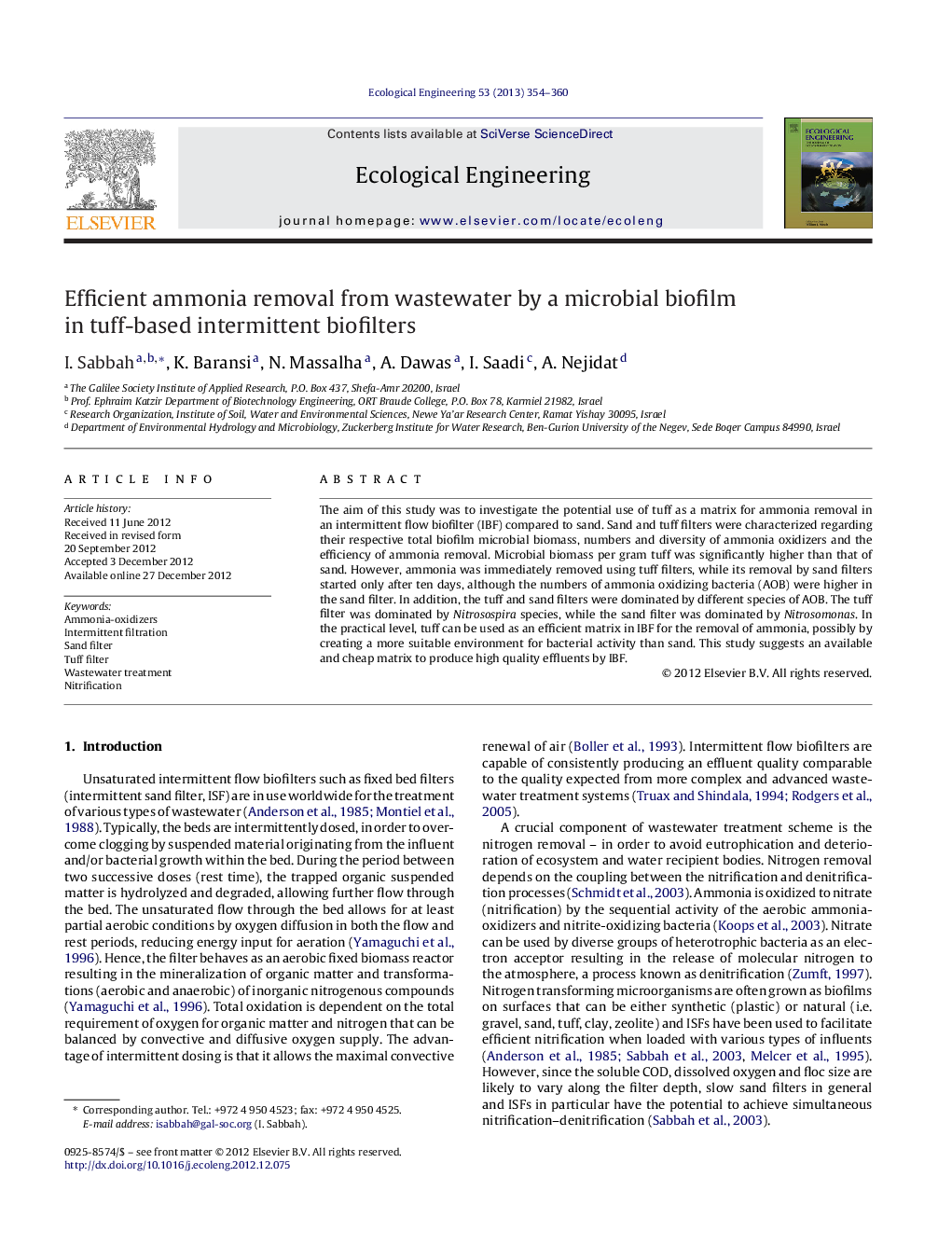| کد مقاله | کد نشریه | سال انتشار | مقاله انگلیسی | نسخه تمام متن |
|---|---|---|---|---|
| 4389703 | 1618045 | 2013 | 7 صفحه PDF | دانلود رایگان |

The aim of this study was to investigate the potential use of tuff as a matrix for ammonia removal in an intermittent flow biofilter (IBF) compared to sand. Sand and tuff filters were characterized regarding their respective total biofilm microbial biomass, numbers and diversity of ammonia oxidizers and the efficiency of ammonia removal. Microbial biomass per gram tuff was significantly higher than that of sand. However, ammonia was immediately removed using tuff filters, while its removal by sand filters started only after ten days, although the numbers of ammonia oxidizing bacteria (AOB) were higher in the sand filter. In addition, the tuff and sand filters were dominated by different species of AOB. The tuff filter was dominated by Nitrosospira species, while the sand filter was dominated by Nitrosomonas. In the practical level, tuff can be used as an efficient matrix in IBF for the removal of ammonia, possibly by creating a more suitable environment for bacterial activity than sand. This study suggests an available and cheap matrix to produce high quality effluents by IBF.
Journal: Ecological Engineering - Volume 53, April 2013, Pages 354–360